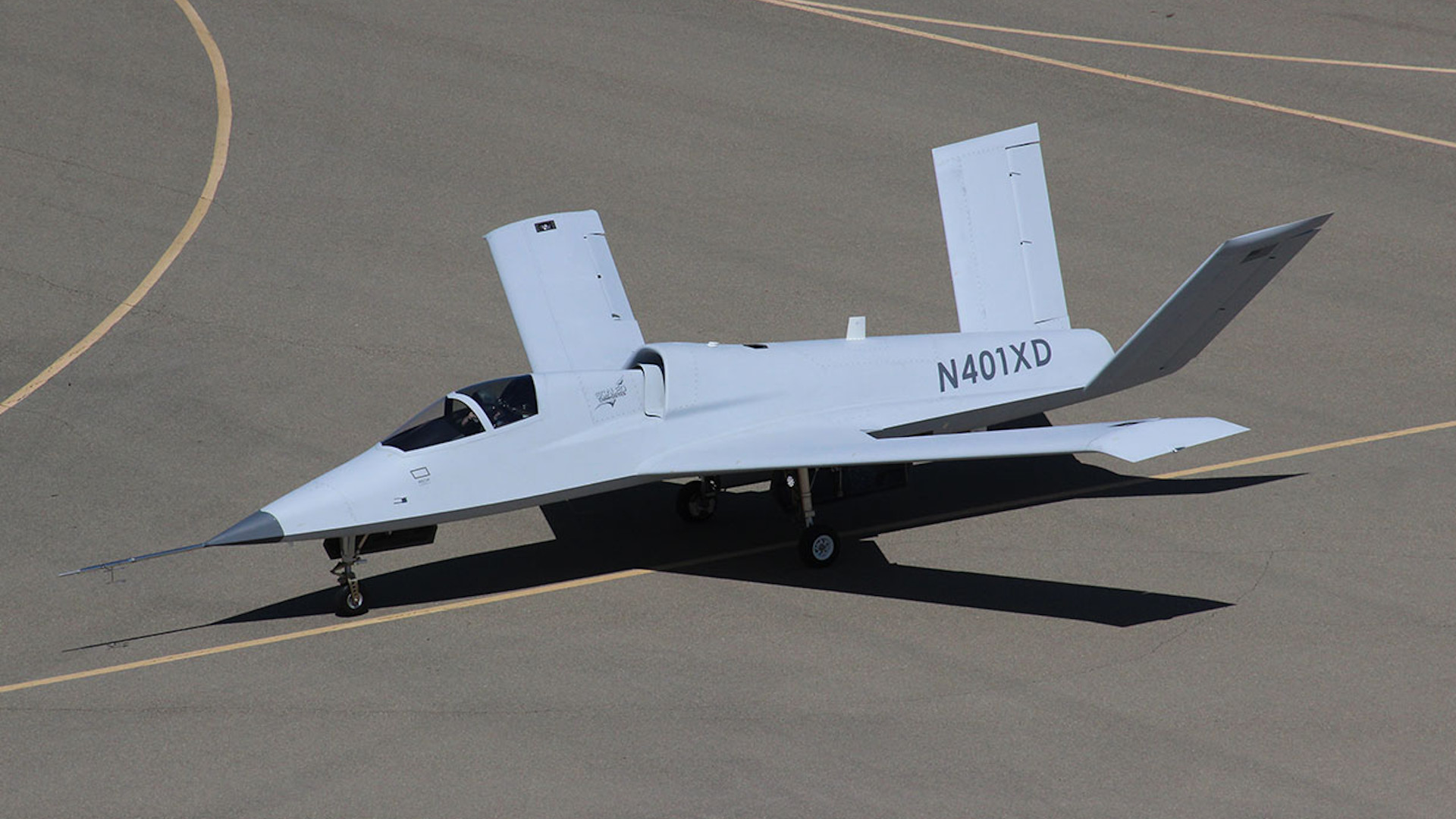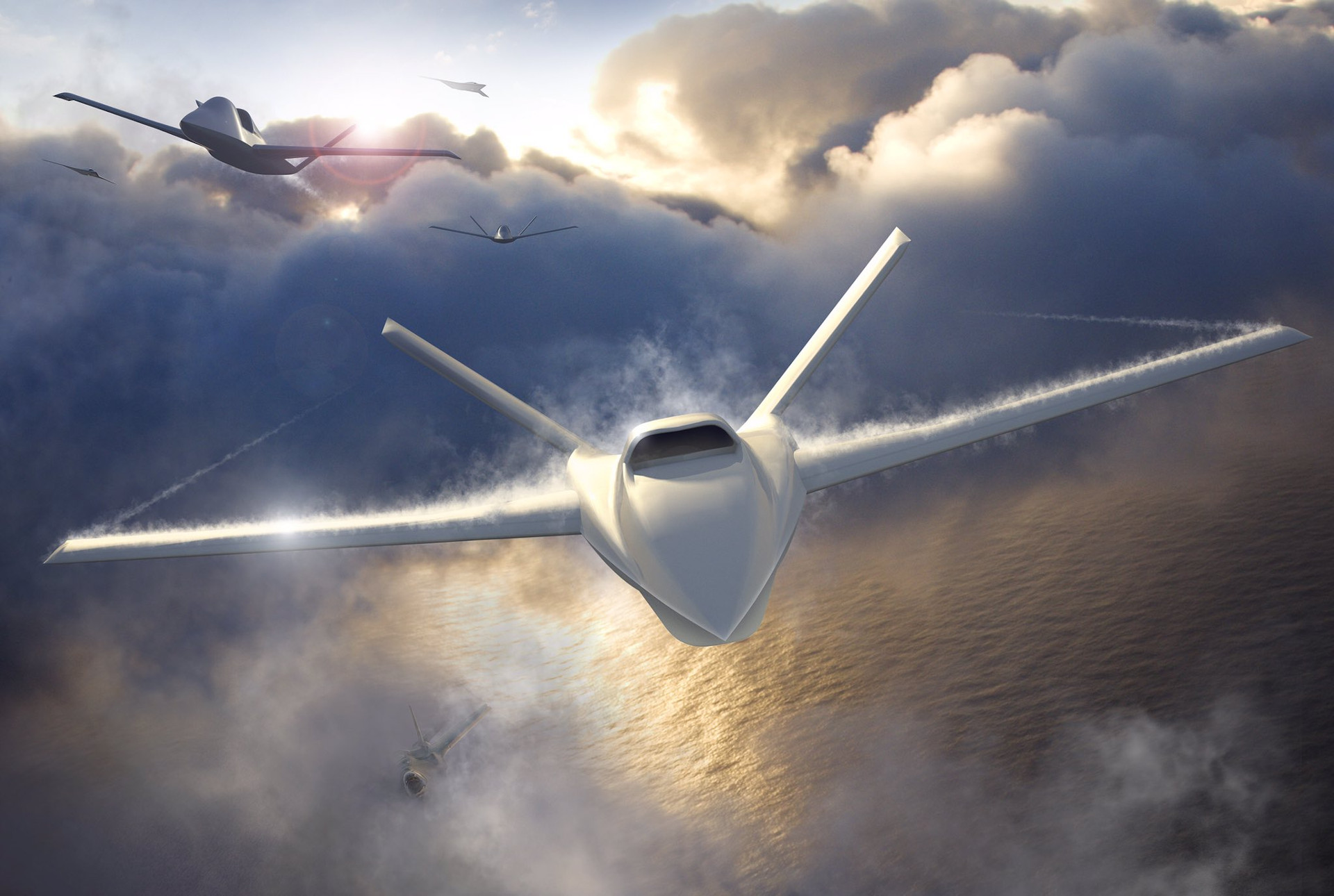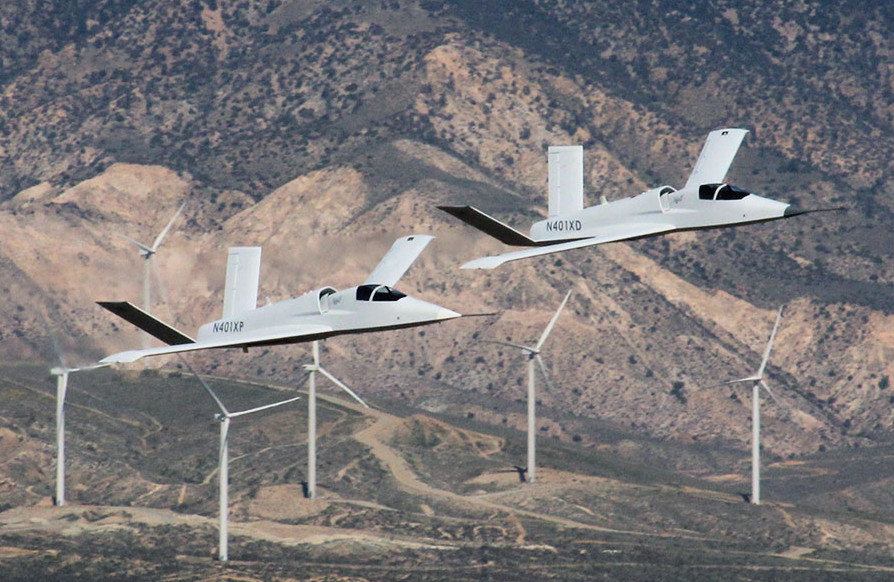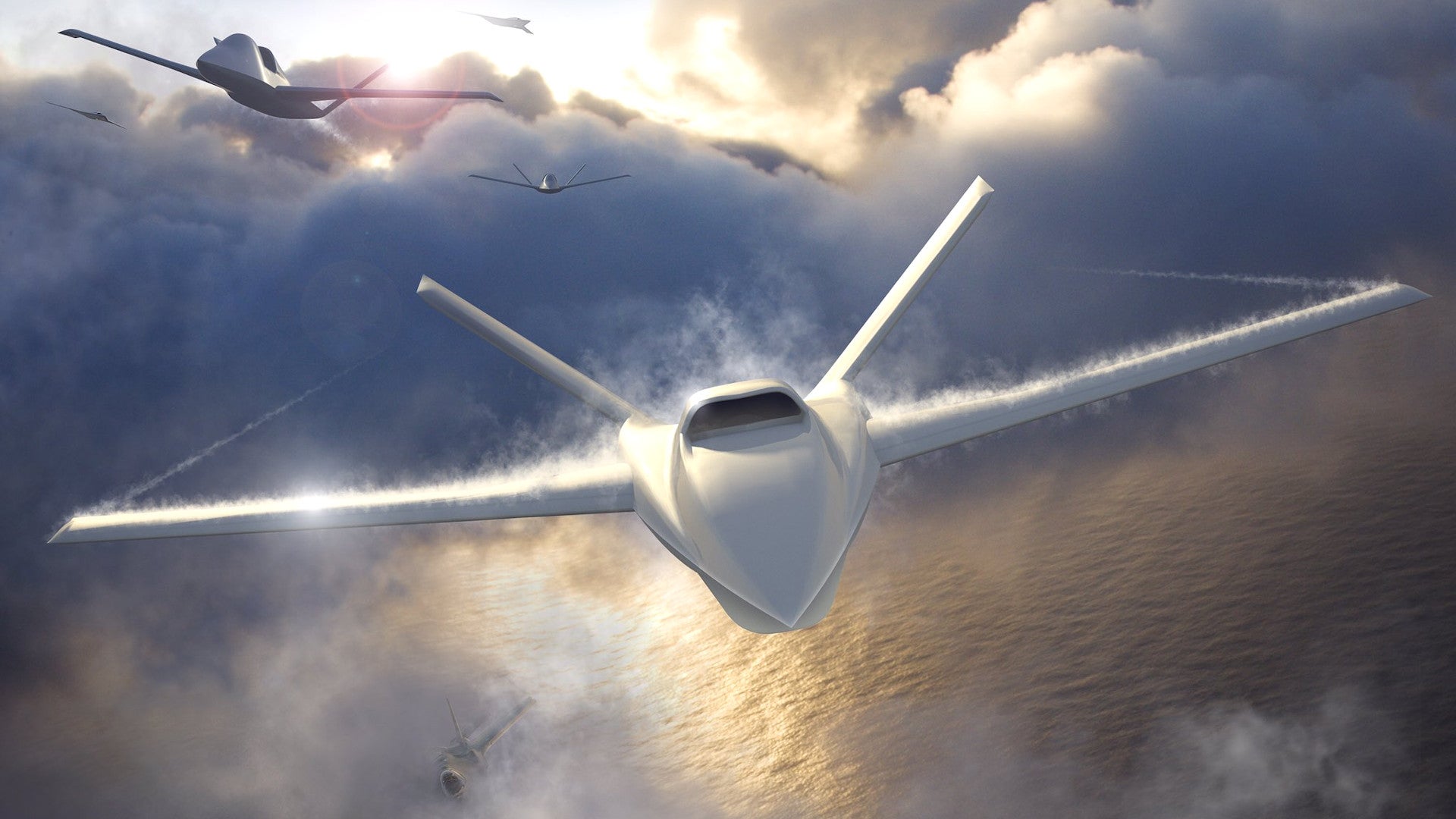Scaled Composites, together with its parent company Northrop Grumman, has unveiled a new unmanned aircraft design, known as the Model 437, which could be configured as a “loyal wingman” intended to work networked together with manned platforms. As such, it could meet the requirements of various efforts seeking to develop, at least in part, this kind of capability, such as the U.S. Air Force’s Skyborg program and the U.K. Royal Air Force’s Project Mosquito. The Model 437 is also notably derived from earlier stealthy Model 401, also known as the “Son of Ares,” which Scaled Composites has now confirmed is intended to be pilot-optional.
Steve Trimble, Aviation Week‘s Defense Editor and friend of The War Zone, Tweeted out the first details about the Model 437, as well as concept art showing the design, yesterday. He had earlier attended an event at the Air Force’s Plant 42 in California, which centered on the work being done on both the Model 437 and the Model 401.

“Scaled Composites showed us a concept for the Model 437, an unmanned cousin of the Model 401, which we also got a full debrief on four years after first flight,” Trimble wrote on Twitter. “It’s [the Model 437] a candidate for USAF Skyborg and RAF Mosquito.”
Concept art that was provided to Aviation Week, seen at the top of this story and below, underscores the Model 437’s evolution from the earlier Model 401, with the two appearing to share much of the same general planform, at least in broad strokes, including their swept main wings and v-tail. Like the Model 401, the Model 437 also has a top-mounted air intake for its engine, which Aviation Week has reported will be a Williams FJ44-series turbofan. The unmanned aircraft’s design appears to have been stealthy features, just like its older cousin, as well.

However, the Model 437 does also feature a completely new fuselage and its wings appear to be better optimized for faster speed, as well as for greater efficiency at those speeds. The drone looks to lack the notably high camber seen on the Model 401, too.
The Model 401 first emerged publicly in 2017 and there are now two of these aircraft. Online flight tracking data had indicated that both of these jets had arrived at Plant 42 ahead of this week’s event, which also included a fly-by by one of these planes, according to Trimble. The two Model 401s, which are nicknamed Deimos and Phobos, are themselves related in some way to Scaled Composites’ earlier Agile Responsive Effective Support (ARES) demonstrator aircraft. Deimos and Phobos are the names of the Greek gods of terror and panic, respectively, and were the sons of Ares, the god of war. As such, the jets are also often referred to as the “Sons of Ares,” as you can read more about in The War Zone‘s exclusive reporting here. Scaled Composites has now also formally named the Model 401 design the Sierra.
It’s worth noting that the full concept art also shows manned and unmanned versions of the Model 401, as well as Northrop Grumman’s SG-101 stealth UCAV. Trimble says he was also shown a mock-up of the pilotless Model 401 during his visit to Plant 42. Northrop Grumman’s SG-101, as well as the smaller SG-102, are unmanned combat air vehicle concepts that are unrelated to the Model 401 and Model 437. The company first unveiled these designs last year as part of its response to the Air Force’s MQ-Next effort, which is exploring successors to the MQ-9 Reaper, as you can read more about here.
With regards to the new Model 437 design, it is also expected to have a range of some 3,000 nautical miles when carrying a load of 4,000 pounds of fuel, and will be able to cruise at around 0.8 Mach, according to Aviation Week. The drone has an internal centerline payload bay that is designed to carry up to 1,000 pounds of stores or other systems, as well. The outlet was told said that a pair of AIM-120 Advanced Medium-Range Air-to-Air Missiles (AMRAAM) or a side-looking radar imaging sensor were two possible loadouts.
Aviation Week learned that the primary expected use for the Model 437 is as a semi-autonomous loyal wingman-type drone working alongside manned aircraft, including fighter jets or so-called high-value airborne assets, or HVAAs. The U.S. Air Force includes various types of supporting aircraft, including intelligence, surveillance, and reconnaissance (ISR) platforms, as well as aerial refueling tankers, among other types in its definition of HVAA. In short, this is a category of aircraft that are critical to current and future aerial operations, but that includes a large number of non-stealthy types that are increasingly vulnerable to hostile fighters and other air defenses, especially the ever-more-advanced capabilities being fielded by near-peer opponents, such as China and Russia.
With this in mind, Scaled Composites has presented the Model 437 to its parent company as a potential candidate for the aforementioned Skyborg program and Project Mosquito, though this unmanned aircraft does not appear to have been formally pitched to either the U.S. Air Force or the Royal Air Force as of yet. Demands for loyal wingman-type drones are emerging elsewhere around the world, as well. Boeing is notably deep in the development of another loyal wingman design, known as the Airpower Teaming System (ATS), for the Royal Australian Air Force.

In addition, it is certainly interesting to note that the potential to transform the Model 401 into a drone, including for use as a loyal wingman, has been discussed on many occasions since that design first appeared some four years ago. Whether Scaled Composites and Northrop Grumman now plan to offer both the unmanned version of the Model 401, as well as the Model 437 drone, for general sale is unclear, though the concept art available now certainly suggests this will be the case. The unmanned Model 401 would offer a larger platform with a greater ability to loiter over certain areas in support of ISR and other mission sets.
The pilotless Model 401 could certainly provide a testbed to support the development of the Model 437. The War Zone has already been closely tracking the use of the manned Model 401s to support various research and development and test and evaluation activities, some of which have been quite exotic in nature, so an unmanned variant could certainly offer a platform for more general testing duties. The aircraft themselves were originally built to help prove out and refine rapid design and production concepts. It took approximately 24 months for Scaled Composites to go from the very start of the Model 401’s development to a first flight.
“The two vehicles are carbon copies of each other. Scaled utilized its in-house agile development processes to concurrently design and build these two demonstrator aircraft, validating Scaled’s digital design and advanced manufacturing methods,” according to Scaled Composites’ website. “By rapidly building two of the same vehicle, Scaled was able to implement design and build solutions discovered on the first aircraft immediately into the second.”

Scaled Composites is well known, in general, for adapting and repurposing many of its designs to meet shifting or all-new requirements.
The War Zone has already reached out to Northrop Grumman for additional information about the Model 437, as well as its progenitor, the Model 401, and we are very excited to learn more about what the future holds for the “Son of Ares,” as well as its own new offspring.
Contact the author: joe@thedrive.com
